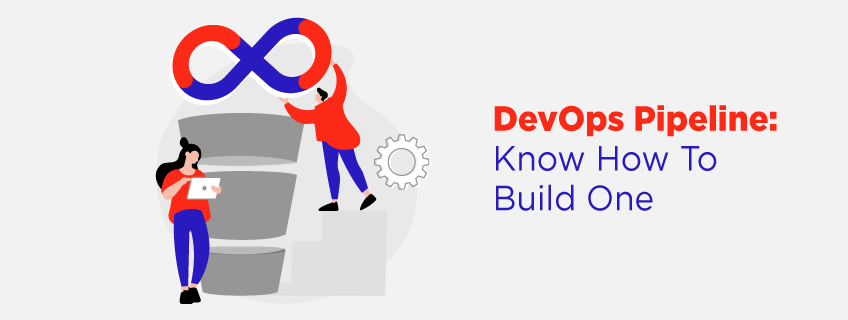Today, the IT infrastructure of major industries and companies is growing rapidly with the help of cloud computing. Earlier in this cloud computing race, Amazon web services used to be the front runner; but now, Microsoft Azure has surpassed it.
Over the second quarter of the fiscal year 2021, the revenue for Microsoft Azure grew by 50%. Furthermore, the network of Microsoft Azure is now stronger than before, thanks to the 60 global Azure regions.
If you too want to enjoy the benefits of this fastest-growing cloud computing platform, then enrolling in Azure training in Bangalore would be a great decision!
If you want to learn about the nit and grit of what Microsoft Azure is and how it works, then read on!
What is Microsoft Azure?
This is a public cloud computing platform that was earlier known as Windows Azure. Before we get on to Microsoft Azure, let’s understand a little more about cloud computing.
With cloud computing, you can access your IT infrastructure over the internet using your computer or mobile and connect to your chosen cloud service provider.
Once logged in, you’ll get access to various virtual machines and storage services. Microsoft Azure is a type of online cloud computing platform through which you can access the cloud resources and services provided by Microsoft and manage them accordingly.
Microsoft Azure was launched back in 2010 and is free of cost initially. It is based on a pay-per-use module.
This means that you only have to pay for the services that you’re using. You’d be surprised to learn that nearly 80% of Fortune 500 companies are currently using Microsoft Azure.
It supports several programming languages such as Java, C++, Node Js, etc. The platform currently provides up to 200 services and resources that are divided roughly into 18 categories.
You will be learning further in-depth about each of these services in an Azure training in Bangalore.
To convince you further about joining an Azure training online, let’s take a look at the services of Microsoft Azure and how they work.
How Does Microsoft Azure Work?
To access all the features and services provided by the Microsoft Azure portal, you first need to subscribe to Azure. You can use the services included in Azure to create various databases and virtual machines for your company.
Not just this, Microsoft Azure also gives you access to multiple third-party apps. However, you’d have to pay a small subscription fee to access these apps.
Currently, Microsoft Azure provides its customers with the following 5 types of customer support:
- Basic
- Developer
- Standard
- Professional Direct
- Premier
Each of these customer support plans varies in terms of their pricing and functionality. All the Azure accounts can make use of the basic customer support plan.
However, a subscription fee of $29 per month is charged for the developer plan, $100 per month of the Standard, and $1000 per month for the Professional Direct.
What are the Services Provided by Microsoft Azure?
As stated above, there are 200 services included in the Microsoft Azure cloud computing platform. These services are divided into 18 categories and you can use them for free initially.
Once the trial period is over and you’ve made up your mind about which service you want to use further, you can pay and get a subscription for it.
In this section, we’ve covered each of these services in brief. To learn furthermore in detail about them, you’d have to join an Azure course.
Computing Services
- Virtual Machine: Using this service, you can create a virtual machine on your own by using Linux, Windows, or other operating systems within a fraction of just a few seconds.
- Cloud Service: As suggested by its name, this service enables you to create and manage your applications, data, and resources within the Microsoft cloud. Once your application is available on the cloud, Microsoft Azure takes care of everything from provisioning to health monitoring.
- Service Fabric: If your company needs to develop a microservice, then the same can be done through a service fabric. Microservice is nothing but a parent application that contains several other smaller applications.
- Functions: If you’re a programmer, then you’d love creating applications in multiple programming languages by using this service. The most-loved part about this service is that there’s no need for you to worry about the hardware requirements of your created applications. Azure takes care of it all on its end.
Networking
- Azure CDN: The Azure Content Delivery Network is a content delivery service. It utilises a large bandwidth because of which you can transfer content to any user across the globe. The service functions by using a vast network of servers that are oriented across the globe.
- Express Route: You can connect your company’s network to the Azure cloud or any other service of your choice through a private connection by using Express Route. This allows free communication between your enterprise and the service.
- Virtual Network: Using this service, you can set up private communication between multipleAzure services.
- Azure DNS: You can host your system domains or DNS domains on Azure cloud by using Azure DNS.
Storage
- Blob Storage: This part of the Azure service is optimized by the creators to allow the storage of large amounts of unstructured data.
- Queue Storage: This service enables you to create a message queue for a large workload. You can access this queue from any corner of the world.
- File Storage: You can access your stored file using this service through an industry SMB protocol.
- Disk Storage: Under this service, you can choose between two options as your storage option – Hard Disk Drive and Solid Disk Drive.
Conclusion
Given the fast-growing pace of Microsoft Azure, IT graduates and professionals are both increasingly gravitating towards joining Azure training in Bangalore. So, have you made up your mind about becoming a cloud computing professional? If yes, then enrol in an Azure course near you to expand your career horizons today!
by Rajat Patel
























